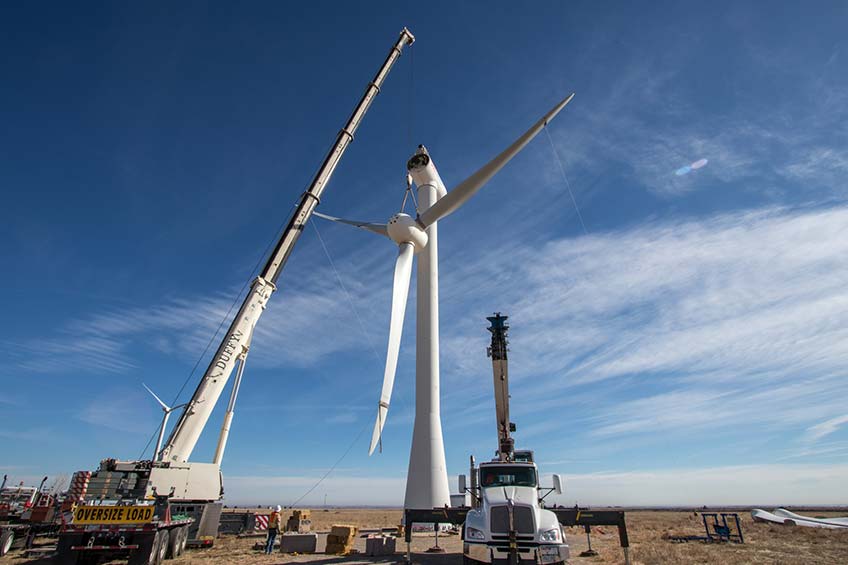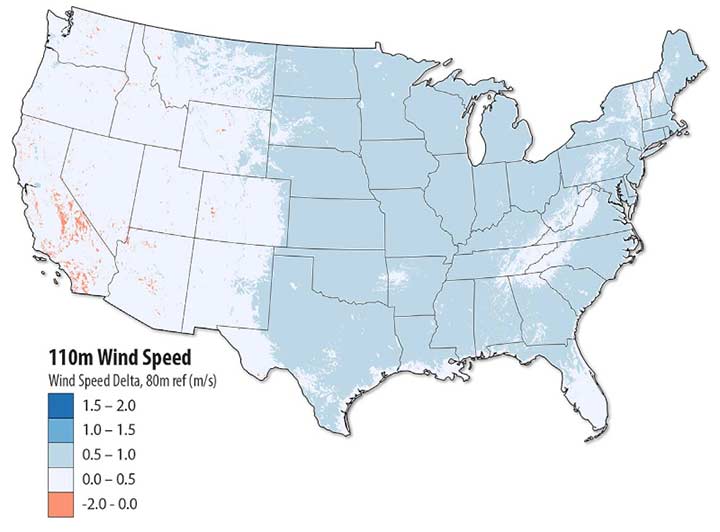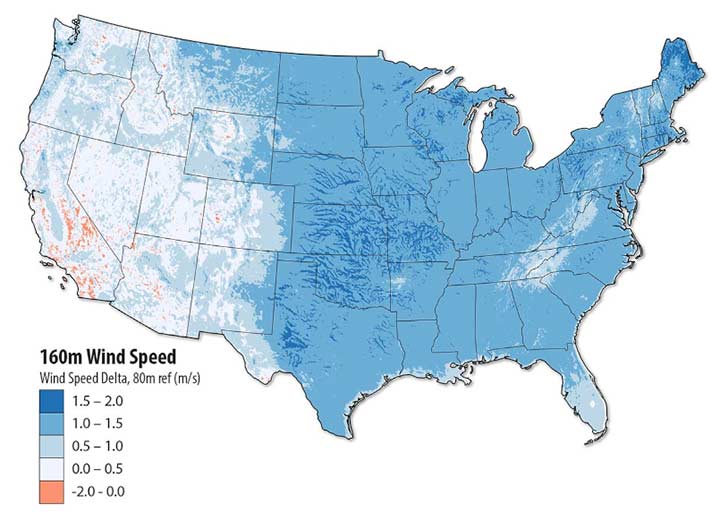Tall Towers Tap Greater Wind Resource Potential
As wind technology grows in scale and productivity, researchers continue to look for ways to boost the energy captured while driving down costs.
In a new study, Increasing Wind Turbine Tower Heights: Opportunities and Challenges, National Renewable Energy Laboratory (NREL) researchers examine opportunities for increasing the height of wind turbine hubs—where the turbine drivetrain and rotors attach—and the conditions and locations where taller towers would have the most impact.

Higher hub heights make it possible to cost-effectively tap wind resources beyond the reach of today’s typical turbines. Photo by Lee Jay Fingersh, NREL 54225
Taller towers can tap stronger wind resources that exist at higher levels, beyond the reach of today’s typical turbines. Higher hubs on wind turbines also reduce interference from trees, buildings, and other topographical features and provide additional clearance needed for longer blades—all of which increases energy capture per turbine.
Size increases have led to greater output from turbines under ideal conditions—also known as the nameplate capacity—which has gone from 100 kW per turbine in the 1980s to approximately 2.2 MW per turbine in 2017. In that same time frame, the average U.S. commercial wind turbines’ hub height increased from 20 meters (m) to 84 m and rotor diameter has expanded from 20 m to 108 m.
“Over the past four decades, wind turbine scaling has been critical to wind power cost reduction. Looking ahead, scaling continues to offer potential cost savings, but new innovations are needed to enable scaling while effectively managing capital expenditures and the logistics of moving equipment to the plant site,” says NREL Group Manager and Researcher Eric Lantz.
NREL’s report assesses how increased hub heights could impact key indicators of wind energy viability across the nation by looking at factors of wind speed, capacity factor, and levelized cost of electricity (LCOE), as well as incremental costs that could be incurred for increases in turbine hub height.


A side-by-side comparison of mean annual wind speed 110 m above ground level minus 80 m and 160 m above ground level minus 80 m. Figure from NREL, based on the WIND Toolkit
NREL’s analysis indicated that there are many areas that could warrant the pursuit of technology enabling higher hub heights. Growing hub heights to 110 meters in the three modeled conceptual turbine classes ranging from 3 MW to 5 MW led to capacity factor increases from 35% to 45% in many locations, with continued capacity factor improvement with hub heights of 140 m. Hub heights of 110 m to 140 m could also offer LCOE advantages relative to today’s shorter turbines, especially in locations where wind shear is relatively strong, such as the eastern United States.
Ongoing NREL research will help guide future wind energy development to reduce the cost of wind energy and increase the contribution of wind to the electrical grid.
Last Updated May 28, 2025
